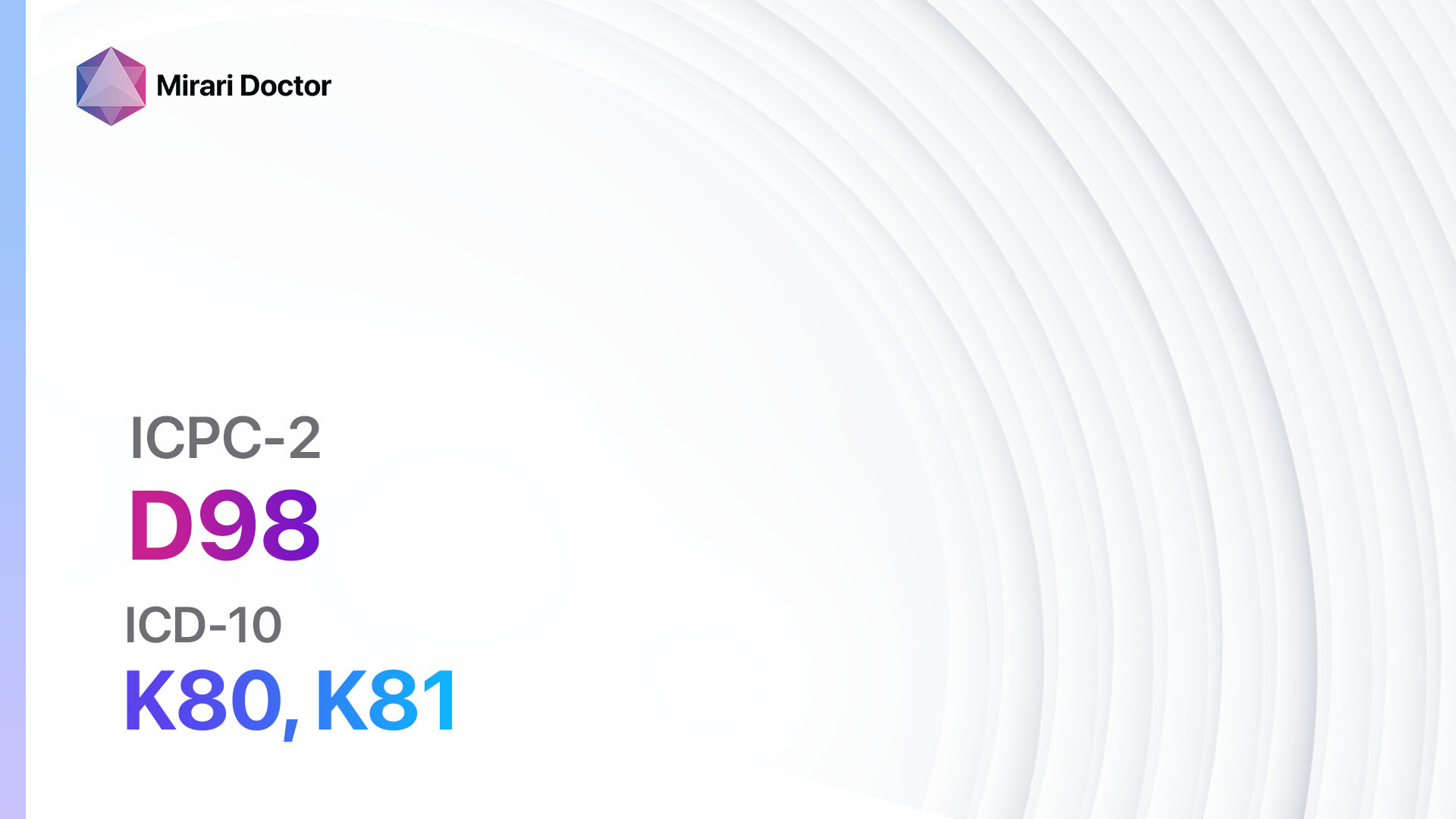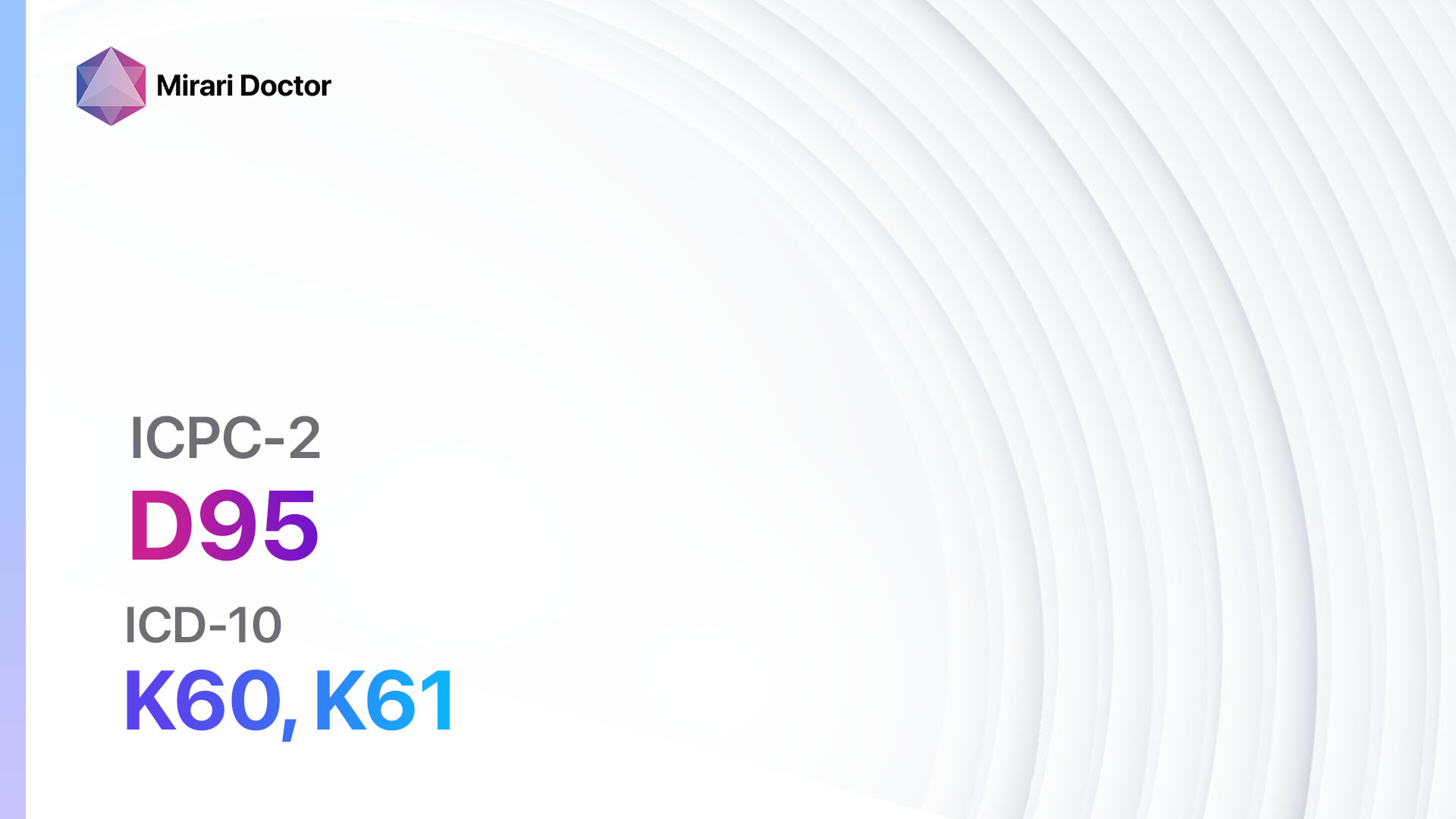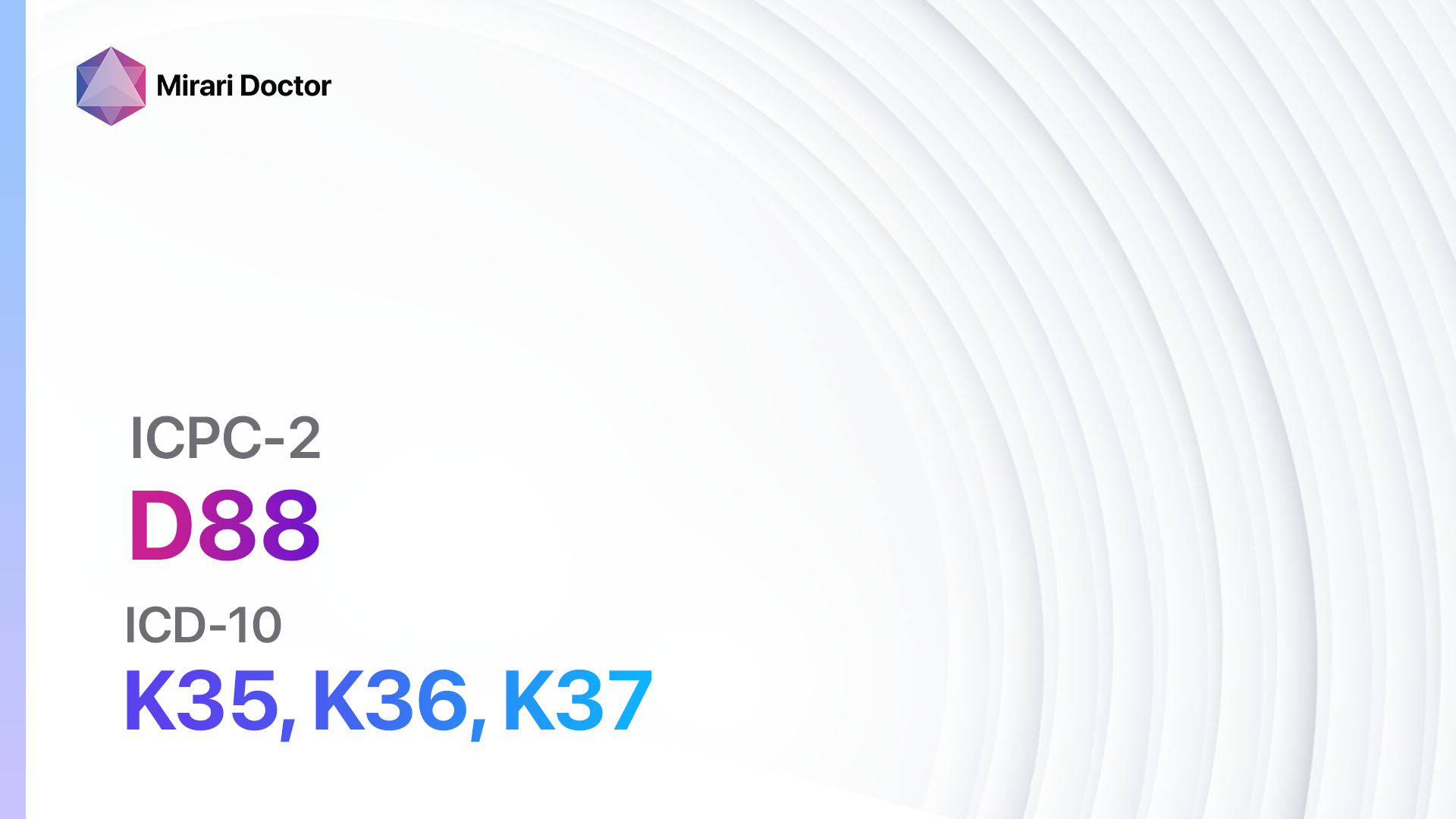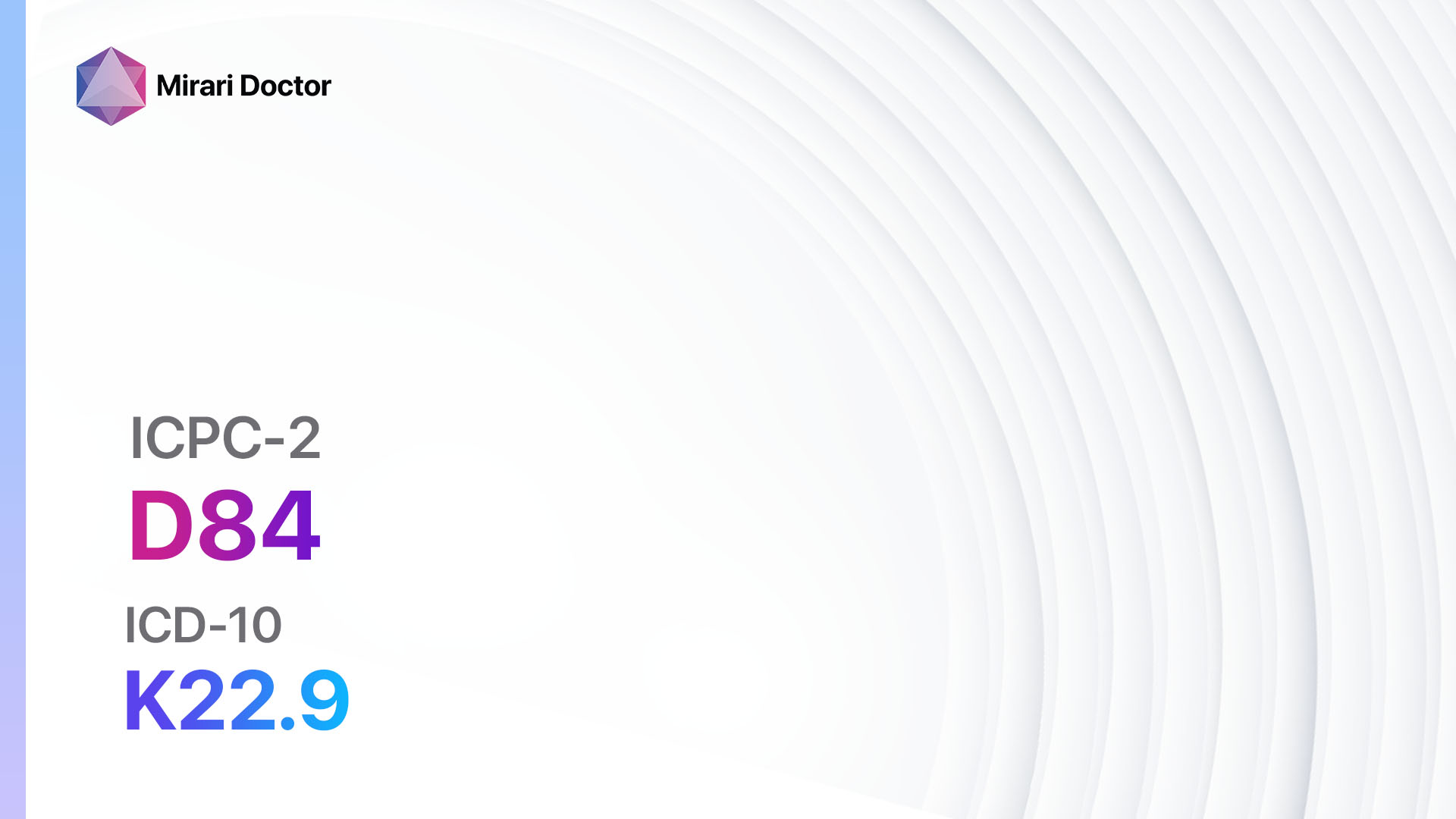
Introduction
Teeth/gum disease, also known as periodontal disease, is a common condition that affects the gums and supporting structures of the teeth[1]. It is characterized by inflammation and infection of the gums, which can lead to tooth loss if left untreated[2]. The aim of this guide is to provide an overview of the symptoms, causes, diagnostic steps, possible interventions, and lifestyle interventions for teeth/gum disease.
Codes
- ICPC-2 Code: D82 Teeth/gum disease[3]
- ICD-10 Code: K08.9 Disorder of teeth and supporting structures, unspecified[4]
Symptoms
- Bleeding gums: Gums that bleed easily, especially during brushing or flossing[5].
- Swollen or tender gums: Gums that are red, swollen, or painful to the touch[6].
- Receding gums: Gums that have pulled away from the teeth, making the teeth appear longer[7].
- Persistent bad breath: Bad breath that does not improve with oral hygiene measures[8].
- Loose or shifting teeth: Teeth that feel loose or move out of position[9].
- Changes in bite: Changes in the way the teeth fit together when biting or chewing[10].
Causes
- Poor oral hygiene: Inadequate brushing and flossing can lead to the buildup of plaque and tartar, which can cause gum disease.
- Smoking: Smoking weakens the immune system and reduces blood flow to the gums, making it harder for the body to fight off infection.
- Hormonal changes: Hormonal changes during pregnancy or menopause can increase the risk of gum disease.
- Diabetes: People with diabetes are at a higher risk of developing gum disease.
- Medications: Certain medications, such as anticonvulsants and immunosuppressants, can increase the risk of gum disease.
- Genetic factors: Some individuals may be genetically predisposed to developing gum disease.
Diagnostic Steps
Medical History
- Gather information about the patient’s oral hygiene habits, including brushing and flossing frequency.
- Ask about any medications the patient is taking that may increase the risk of gum disease.
- Inquire about any hormonal changes, such as pregnancy or menopause.
- Assess the patient’s medical history, including any conditions that may increase the risk of gum disease, such as diabetes or immune disorders.
Physical Examination
- Inspect the gums for signs of inflammation, such as redness, swelling, or tenderness.
- Measure the depth of the gum pockets using a periodontal probe.
- Assess the mobility of the teeth.
- Check for any signs of gum recession or changes in bite.
Laboratory Tests
- Complete blood count (CBC): To check for any signs of infection or inflammation.
- Oral DNA test: To identify specific bacteria that may be causing the gum disease.
- Salivary testing: To assess the patient’s saliva flow and composition, which can affect oral health.
Diagnostic Imaging
- Dental X-rays: To evaluate the bone levels and detect any bone loss associated with gum disease.
- Cone beam computed tomography (CBCT): To obtain a three-dimensional image of the teeth and supporting structures.
Other Tests
- Periodontal charting: To record the depth of gum pockets and assess the severity of gum disease.
- Biopsy: In rare cases, a biopsy may be performed to rule out other conditions that may mimic gum disease, such as oral cancer.
Follow-up and Patient Education
- Schedule regular follow-up appointments to monitor the progress of treatment and assess the patient’s oral health.
- Provide education on proper oral hygiene techniques, including brushing, flossing, and the use of antimicrobial mouthwashes.
- Emphasize the importance of regular dental visits for professional cleanings and check-ups.
Possible Interventions
Traditional Interventions
Medications:
Top 5 drugs for Teeth/gum disease:
- Antibiotics (e.g., Amoxicillin, Metronidazole):
- Cost: Generic versions can be $3-$50/month.
- Contraindications: Hypersensitivity to antibiotics.
- Side effects: Nausea, diarrhea, allergic reactions.
- Severe side effects: Severe allergic reactions, antibiotic resistance.
- Drug interactions: Warfarin, oral contraceptives.
- Warning: Complete the full course of antibiotics as prescribed.
- Antiseptic mouthwashes (e.g., Chlorhexidine):
- Cost: $5-$15 per bottle.
- Contraindications: Allergy to antiseptics.
- Side effects: Temporary staining of teeth, altered taste.
- Severe side effects: Allergic reactions.
- Drug interactions: None reported.
- Warning: Do not swallow the mouthwash.
- Nonsteroidal anti-inflammatory drugs (NSAIDs) (e.g., Ibuprofen):
- Cost: Generic versions can be $3-$10/month.
- Contraindications: Active peptic ulcer disease, bleeding disorders.
- Side effects: Upset stomach, increased risk of bleeding.
- Severe side effects: Severe gastrointestinal bleeding, kidney problems.
- Drug interactions: Aspirin, other NSAIDs.
- Warning: Take with food to minimize stomach upset.
- Topical gels or ointments (e.g., Lidocaine gel):
- Cost: $5-$20 per tube.
- Contraindications: Allergy to local anesthetics.
- Side effects: Temporary numbness, allergic reactions.
- Severe side effects: Severe allergic reactions.
- Drug interactions: None reported.
- Warning: Use as directed and avoid swallowing the gel.
- Oral rinses (e.g., Hydrogen peroxide rinse):
- Cost: $5-$10 per bottle.
- Contraindications: Allergy to hydrogen peroxide.
- Side effects: Temporary foaming, altered taste.
- Severe side effects: Allergic reactions.
- Drug interactions: None reported.
- Warning: Do not swallow the rinse.
Alternative Drugs:
- Probiotics: Some studies suggest that certain strains of probiotics may help reduce gum inflammation.
- Systemic antibiotics: In severe cases, systemic antibiotics may be prescribed to control the infection.
Surgical Procedures:
- Scaling and root planing: A deep cleaning procedure that removes plaque and tartar from below the gumline and smooths the root surfaces. Cost: $100-$300 per quadrant.
- Gingival flap surgery: Involves lifting the gums to remove tartar and bacteria and then repositioning the gums to fit snugly around the teeth. Cost: $500-$3,000 per quadrant.
- Grafting: In cases of gum recession, tissue grafts may be used to cover exposed tooth roots. Cost: $600-$3,000 per tooth.
Alternative Interventions
- Oil pulling: Involves swishing oil (e.g., coconut oil) in the mouth to reduce bacteria. Cost: $5-$20 for a bottle of oil.
- Herbal mouth rinses: Some herbal mouth rinses, such as sage or chamomile, may have antimicrobial properties. Cost: $5-$15 per bottle.
- Saltwater rinses: Saltwater rinses can help reduce inflammation and promote healing. Cost: Minimal.
- Turmeric paste: Applying a paste made from turmeric and water to the gums may help reduce inflammation. Cost: $5-$10 for a bottle of turmeric powder.
- Vitamin C supplements: Vitamin C may help support gum health. Cost: $5-$20 for a bottle of vitamin C tablets.
Lifestyle Interventions
- Improved oral hygiene: Emphasize the importance of regular brushing and flossing to remove plaque and prevent gum disease. Cost: Minimal.
- Quitting smoking: Encourage patients to quit smoking, as it is a major risk factor for gum disease. Cost: Varies depending on the method used for smoking cessation.
- Healthy diet: Promote a diet rich in fruits, vegetables, and whole grains, and low in sugary and processed foods. Cost: Varies depending on food choices.
- Stress management: Stress can weaken the immune system and increase the risk of gum disease. Encourage stress-reducing activities such as exercise, meditation, or counseling. Cost: Varies depending on the chosen method of stress management.
- Regular dental visits: Stress the importance of regular dental check-ups and cleanings to maintain oral health. Cost: Varies depending on dental insurance coverage.
It is important to note that the cost ranges provided are approximate and may vary depending on the location and availability of the interventions.
Mirari Cold Plasma Alternative Intervention
Understanding Mirari Cold Plasma
- Safe and Non-Invasive Treatment: Mirari Cold Plasma is a safe and non-invasive treatment option for various skin conditions. It does not require incisions, minimizing the risk of scarring, bleeding, or tissue damage.
- Efficient Extraction of Foreign Bodies: Mirari Cold Plasma facilitates the removal of foreign bodies from the skin by degrading and dissociating organic matter, allowing easier access and extraction.
- Pain Reduction and Comfort: Mirari Cold Plasma has a local analgesic effect, providing pain relief during the treatment, making it more comfortable for the patient.
- Reduced Risk of Infection: Mirari Cold Plasma has antimicrobial properties, effectively killing bacteria and reducing the risk of infection.
- Accelerated Healing and Minimal Scarring: Mirari Cold Plasma stimulates wound healing and tissue regeneration, reducing healing time and minimizing the formation of scars.
Mirari Cold Plasma Prescription
Video instructions for using Mirari Cold Plasma Device – D82 Teeth/gum disease (ICD-10:K08.9)
| Mild | Moderate | Severe |
| Mode setting: 1 (Infection) Location: 0 (Localized) Morning: 15 minutes, Evening: 15 minutes |
Mode setting: 1 (Infection) Location: 0 (Localized) Morning: 30 minutes, Lunch: 30 minutes, Evening: 30 minutes |
Mode setting: 1 (Infection) Location: 0 (Localized) Morning: 30 minutes, Lunch: 30 minutes, Evening: 30 minutes |
| Mode setting: 2 (Wound Healing) Location: 0 (Localized) Morning: 15 minutes, Evening: 15 minutes |
Mode setting: 2 (Wound Healing) Location: 0 (Localized) Morning: 30 minutes, Lunch: 30 minutes, Evening: 30 minutes |
Mode setting: 2 (Wound Healing) Location: 0 (Localized) Morning: 30 minutes, Lunch: 30 minutes, Evening: 30 minutes |
| Mode setting: 3 (Antiviral Therapy) Location: 3 (Kidney, Liver & Spleen) Morning: 15 minutes, Evening: 15 minutes |
Mode setting:3 (Antiviral Therapy) Location: 3 (Kidney, Liver & Spleen) Morning: 30 minutes, Lunch: 30 minutes, Evening: 30 minutes |
Mode setting: 3 (Antiviral Therapy) Location: 3 (Kidney, Liver & Spleen) Morning: 30 minutes, Lunch: 30 minutes, Evening: 30 minutes |
| Total Morning: 45 minutes approx. $7.50 USD, Evening: 45 minutes approx. $7.50 USD |
Total Morning: 90 minutes approx. $15 USD, Lunch: 90 minutes approx. $15 USD, Evening: 90 minutes approx. $15 USD, |
Total Morning: 90 minutes approx. $15 USD, Lunch: 90 minutes approx. $15 USD, Evening: 90 minutes approx. $15 USD, |
| Usual treatment for 7-60 days approx. $105 USD – $900 USD | Usual treatment for 6-8 weeks approx. $1,890 USD – $2,520 USD |
Usual treatment for 3-6 months approx. $4,050 USD – $8,100 USD
|
 |
|
Use the Mirari Cold Plasma device to treat Teeth/gum disease effectively.
WARNING: MIRARI COLD PLASMA IS DESIGNED FOR THE HUMAN BODY WITHOUT ANY ARTIFICIAL OR THIRD PARTY PRODUCTS. USE OF OTHER PRODUCTS IN COMBINATION WITH MIRARI COLD PLASMA MAY CAUSE UNPREDICTABLE EFFECTS, HARM OR INJURY. PLEASE CONSULT A MEDICAL PROFESSIONAL BEFORE COMBINING ANY OTHER PRODUCTS WITH USE OF MIRARI.
Step 1: Cleanse the Skin
- Start by cleaning the affected area of the skin with a gentle cleanser or mild soap and water. Gently pat the area dry with a clean towel.
Step 2: Prepare the Mirari Cold Plasma device
- Ensure that the Mirari Cold Plasma device is fully charged or has fresh batteries as per the manufacturer’s instructions. Make sure the device is clean and in good working condition.
- Switch on the Mirari device using the power button or by following the specific instructions provided with the device.
- Some Mirari devices may have adjustable settings for intensity or treatment duration. Follow the manufacturer’s instructions to select the appropriate settings based on your needs and the recommended guidelines.
Step 3: Apply the Device
- Place the Mirari device in direct contact with the affected area of the skin. Gently glide or hold the device over the skin surface, ensuring even coverage of the area experiencing.
- Slowly move the Mirari device in a circular motion or follow a specific pattern as indicated in the user manual. This helps ensure thorough treatment coverage.
Step 4: Monitor and Assess:
- Keep track of your progress and evaluate the effectiveness of the Mirari device in managing your Teeth/gum disease. If you have any concerns or notice any adverse reactions, consult with your health care professional.
Note
This guide is for informational purposes only and should not replace the advice of a medical professional. Always consult with your healthcare provider or a qualified medical professional for personal advice, diagnosis, or treatment. Do not solely rely on the information presented here for decisions about your health. Use of this information is at your own risk. The authors of this guide, nor any associated entities or platforms, are not responsible for any potential adverse effects or outcomes based on the content.
Mirari Cold Plasma System Disclaimer
- Purpose: The Mirari Cold Plasma System is a Class 2 medical device designed for use by trained healthcare professionals. It is registered for use in Thailand and Vietnam. It is not intended for use outside of these locations.
- Informational Use: The content and information provided with the device are for educational and informational purposes only. They are not a substitute for professional medical advice or care.
- Variable Outcomes: While the device is approved for specific uses, individual outcomes can differ. We do not assert or guarantee specific medical outcomes.
- Consultation: Prior to utilizing the device or making decisions based on its content, it is essential to consult with a Certified Mirari Tele-Therapist and your medical healthcare provider regarding specific protocols.
- Liability: By using this device, users are acknowledging and accepting all potential risks. Neither the manufacturer nor the distributor will be held accountable for any adverse reactions, injuries, or damages stemming from its use.
- Geographical Availability: This device has received approval for designated purposes by the Thai and Vietnam FDA. As of now, outside of Thailand and Vietnam, the Mirari Cold Plasma System is not available for purchase or use.
References
- Heritage Dental Katy. (2023). Gum Disease: Causes, Symptoms, and Treatment Options. Retrieved from https://heritagedentalkaty.com/gum-disease-causes-symptoms-and-treatment-options/
- WebMD. (2023). Periodontitis (Gum Disease): Causes, Symptoms, and Treatment. Retrieved from https://www.webmd.com/oral-health/gingivitis-periodontal-disease
- PH3C. (n.d.). ICPC-2 Codes. Retrieved from http://www.ph3c.org/PH3C/docs/27/000496/0000908.pdf
- AAPC. (2023). ICD-10 Code for Disorder of teeth and supporting structures, unspecified. Retrieved from https://www.aapc.com/codes/icd-10-codes/K08.9
- Crest. (2023). Gum Disease: Symptoms, Causes and Treatments. Retrieved from https://crest.com/en-us/oral-care-tips/gum-health/gum-disease-symptoms-causes-treatments
- Mayo Clinic. (2023). Periodontitis – Symptoms and causes. Retrieved from https://www.mayoclinic.org/diseases-conditions/periodontitis/symptoms-causes/syc-20354473
- Healthline. (2023). Periodontitis: Symptoms, Causes, and Treatments. Retrieved from https://www.healthline.com/health/periodontitis
- Health.com. (2023). Gum Disease: Types, Symptoms, Causes, Treatment, & More. Retrieved from https://www.health.com/gum-disease-8584995
- Cleveland Clinic. (2022). Periodontitis (Gum Disease): Symptoms, Stages & Treatment. Retrieved from https://my.clevelandclinic.org/health/diseases/16620-periodontitis
- Newman, Michael G. ; Sims, Thomas N. (1979.0). The Predominant Cultivable Microbiota of the Periodontal Abscess. DOI: 10.1902/jop.1979.50.7.350
Related articles
Made in USA




























